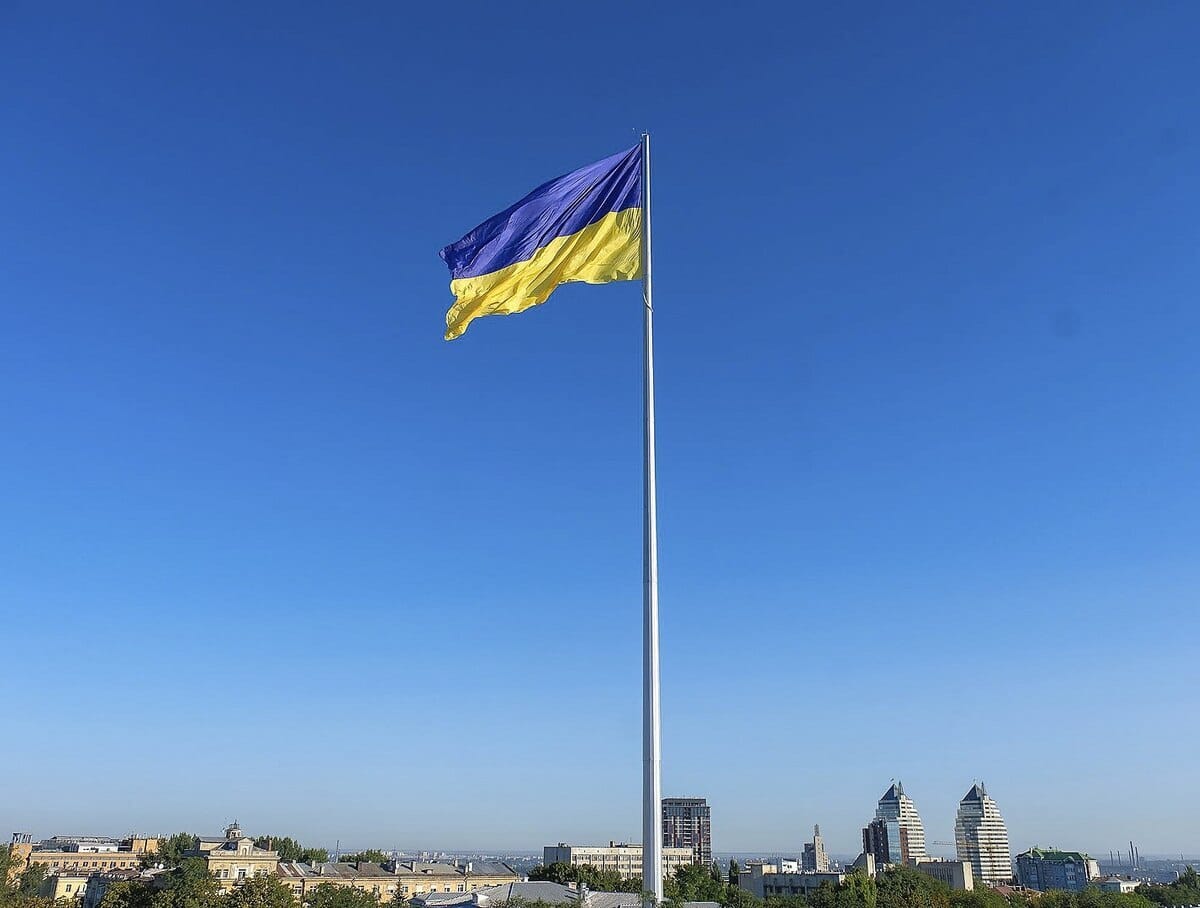In the Russian-language segment of the Internet, for many years there has been a version about the lack of independence of Ukrainian national symbols - the flag and coat of arms. We decided to check how true this is.
The version most widely presented on social networks is that the Ukrainian yellow-blue flag was presented to the residents of Galicia by the Austrian rulers. As evidence, the similarity of the flags of some territories subordinate to the Habsburgs in the 19th century is cited - Ukraine, the land of Lower Austria and the province of Dalmatia. They write about this on blogs in LiveJournal, in the public “VKontakte” “Parliament of Novorossiya", on the website "Military Review"and are told in the series on RuTube "500 seconds of truth about Ukraine" There are fewer disputes around the coat of arms, but they do exist: for example, in blogs on LiveJournal They claim that the trident is a sign of Russian princes and has nothing to do with Ukraine.
The Ukrainian flag was first adopted when the country gained statehood in 1917. A yellow-blue banner was raised over the building of the Pedagogical Museum in Kyiv, where the Central Rada met, and subsequently main authority in Ukraine. The flag then became official for the Ukrainian People's Republic. The colors were not chosen by chance - back in 1848 they were considered the main symbol of the Ukrainian national movement.
In 1848, a wave of revolutions swept across Europe: in February in France and the German principalities, in March in the Austrian Empire, which at that time included Galicia, the western part of modern Ukraine. Lviv became the center of the national movement. In May, supporters of granting Galicia broad autonomy created the Golovna Ruska Rada, a political body of Galician Rusyns (in modern terminology, Ukrainians, not to be confused with Rusyns as a nationality). At the same time, the first flag was raised, which can be considered national. In May 1848, the Rada decided, that “the banner of the land here is a lion, and the colors of the Ruthenian people are yellow and blue.” In June, the flag was briefly hung over the Lviv City Hall, then removed at the request of the authorities.
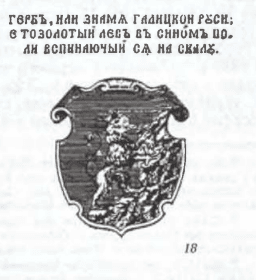
Participant in Rada meetings, historian and writer Yakov Golovnitsky in 1851 in a historical essay on the events of 1848, told about the appearance of a new flag: “For the first time, the Rusyns found themselves in a place where everything reminded them of their nationality. Two blue and yellow banners were hung under the portrait of the reigning monarch Ferdinand.” Golovnitsky then presents a symbolic interpretation of the flowers, and after that traces their history to the historical coat of arms of Galicia - a golden lion on a blue background, resting on a rock.
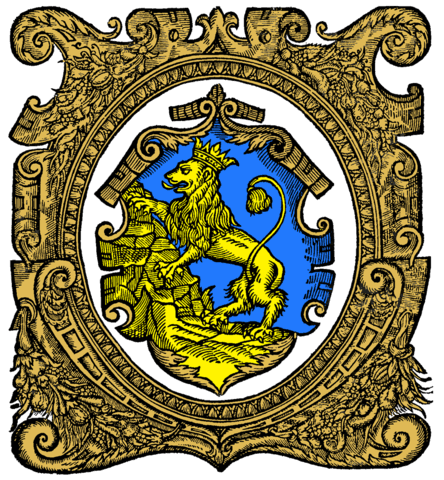
The lion has been found on the seals of Galician-Volyn princes since the 14th century. Presumably, Lvov was named after Prince Lev Danilovich (1228–1301). The lion as an official symbol was already established under his grandchildren Lev Yuryevich and Andrei Yuryevich, representatives of the Galician branch of the Rurikovichs.
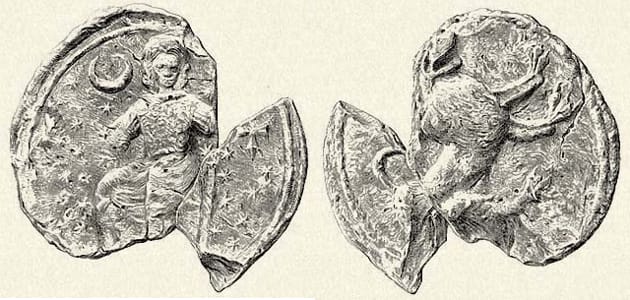
In European armorials XV century golden (yellow) lion in an azure (blue) field is invariably indicated as the coat of arms of Lviv.

Russian bloggers, seeking to expose the history of Ukrainian state symbols, often pay attention to the identity of some flags. In fact, the flags of Ukraine, Lower Austria And Dalmatia They are blue and yellow panels. And this is not surprising: all three flags correspond to the principle of coat of arms. The coat of arms of Ukraine, as mentioned above, is a golden lion in a blue field. Coat of arms of Lower Austria - five gold eagles in a blue field. The coat of arms of Dalmatia (part of modern Croatia) is three crowned leopards, also gold and also on a blue background.
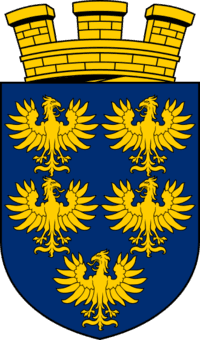
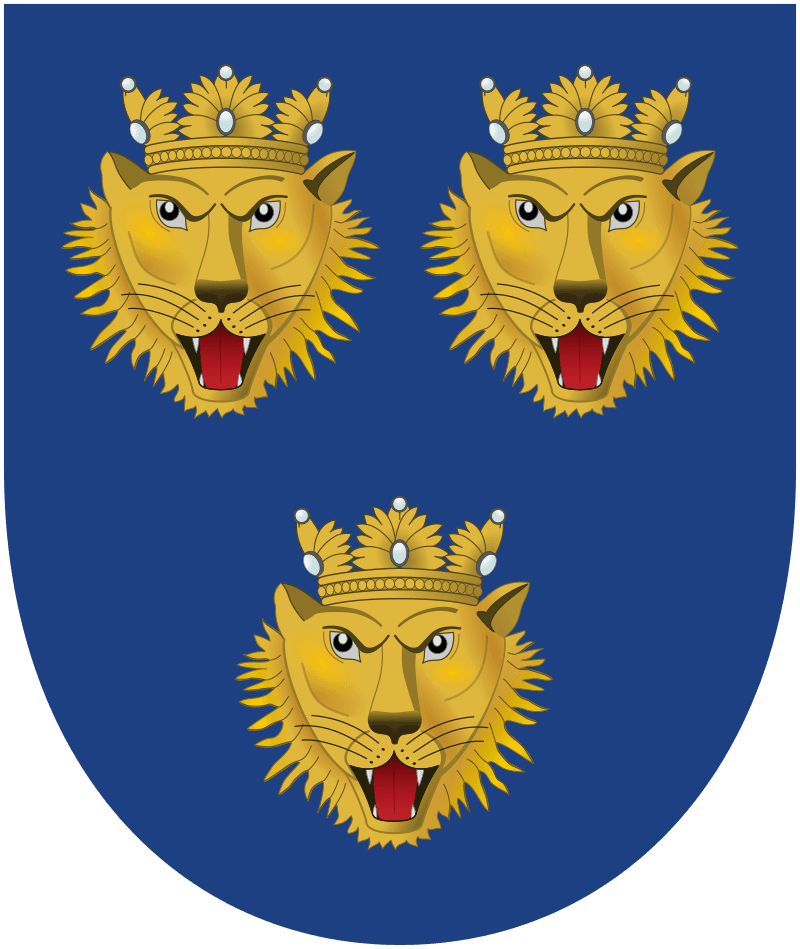
Three almost identical flags, surprisingly, are just a coincidence and a tribute to the German-Austrian tradition when flags of coat of arms were flown. However, the Russian black-yellow-white tricolor adopted under Alexander II reflects the same principle and follows the colors of the imperial coat of arms.
Thus, sources indicate that the Ukrainian flag appeared in 1848 independently of the Austrian authorities, its colors repeat the range of the historical coat of arms of Lviv and have nothing to do with Lower Austria or Dalmatia.
The Ukrainian coat of arms, the trident (trident), arose much later. In September 1917, historian Mikhail Grushevsky, who became the head of the Central Rada, published an article dedicated to the future coat of arms of the state. “The question is not so simple, because there was no generally recognized, permanent state emblem of Ukraine. There were different signs that more or less fit this concept,” Grushevsky wrote. He suggested several options, including an ancient "stylized heraldic device of unclear meaning." The head of the Central Rada rejected the remaining symbols as unsuitable for the unification of the country, including the Galician lion.
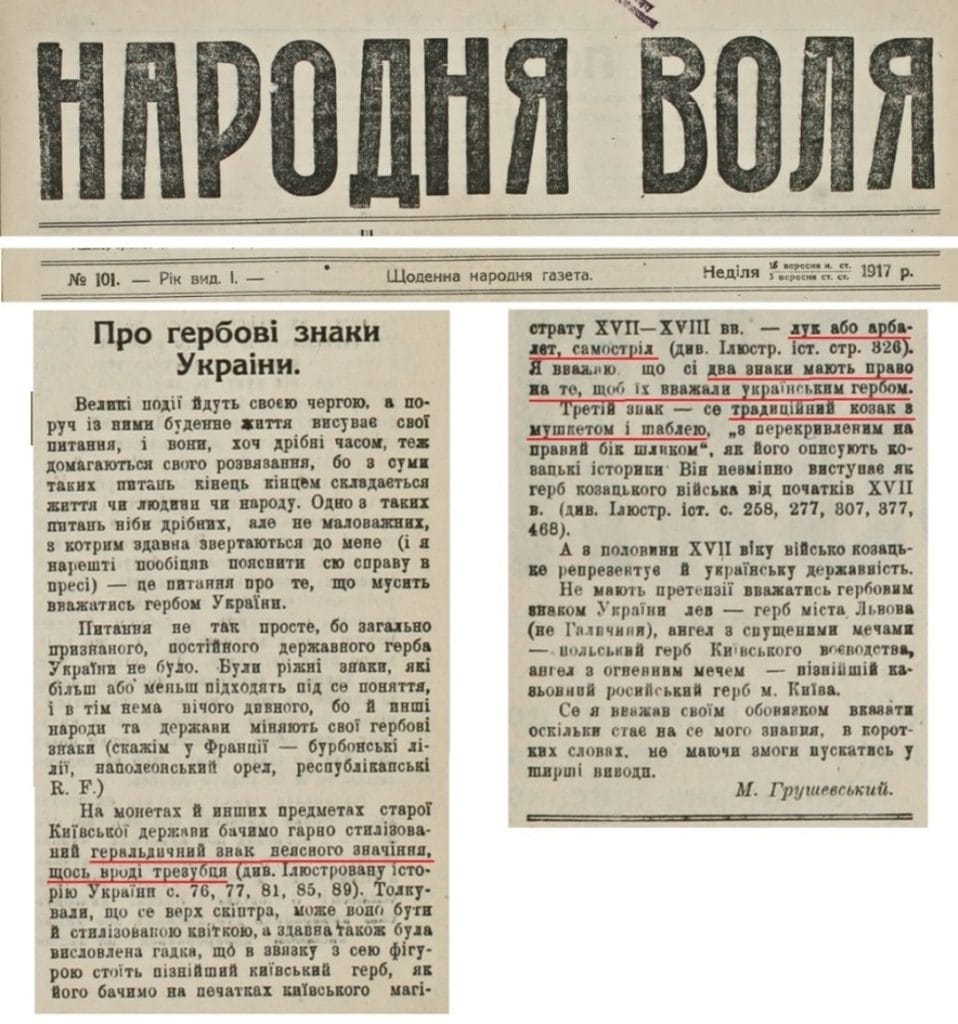
The sign that Grushevsky wrote about really has ancient origins. He meets on silver coins (pieces of silver) from the time of Grand Duke Vladimir.
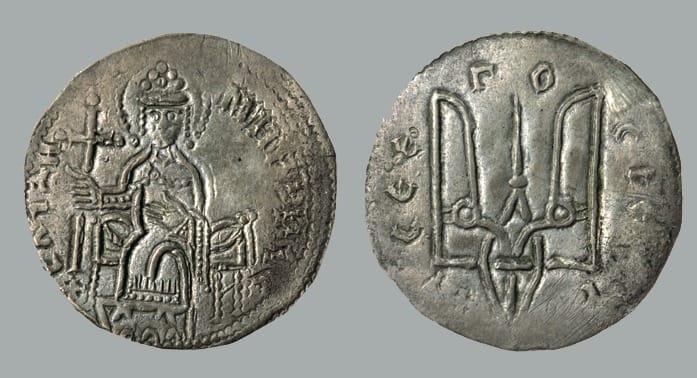
By the time Grushevsky’s article was written, there was no scientific consensus on what is depicted on the coins of Vladimir and Yaroslav - a trident, a falling bird or a combination of letters. Now historians and archaeologists are sure, that we are talking specifically about the trident, and the sign was actually the coat of arms of the Rurikovichs. The statement that the sign belongs specifically to the Russian princes is an anachronism. Vladimir was both a Novgorod prince and a Kyiv prince; both modern Russia and Ukraine can equally claim his legacy.
Thus, Ukrainian state symbols - both the flag and the coat of arms - have a clear historical origin, which does not allow them to be considered borrowed.
Not true
If you find a spelling or grammatical error, please let us know by highlighting the error text and clicking Ctrl+Enter.


